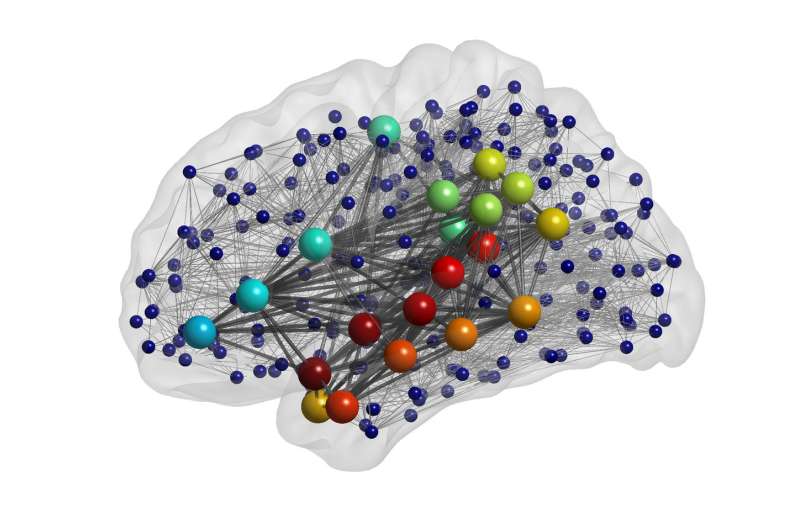How does brain structure influence performance on language tasks?

The architecture of each person's brain is unique, and differences may influence how quickly people can complete various cognitive tasks.
But how neuroanatomy impacts performance is largely an open question.
To learn more, scientists are developing a new tool—computational models of the brain—to simulate how the structure of the brain may impact brain activity and, ultimately, human behavior. The research focuses on interconnectivity within the brain, looking at how different regions are linked to and interact with one another (traits that vary between individuals).
In an initial proof-of-concept study, a team led by University at Buffalo mathematician Sarah Muldoon finds that this approach shows promise for understanding the interplay between brain structure and performance on language-related tasks. The research was published in PLOS Computational Biology on Oct. 17.
"We are creating these personalized brain network models to understand what the brain is doing, based on how connected different regions of a person's brain are to one another," says first author Kanika Bansal, a postdoctoral researcher jointly working at UB, the U.S. Army Research Laboratory (ARL) and Columbia University.
"Models like this are powerful tools because they allow us to conduct 'in silico' experiments to understand brain function on a personal basis," adds Muldoon, Ph.D., assistant professor of mathematics in the UB College of Arts and Sciences and a faculty member in UB's Computational and Data-Enabled Science and Engineering and neuroscience programs.
The power of a personalized brain model
In the new study, researchers created data-driven mathematical models of the individual brains of 10 people based on diffusion spectrum images which capture the structural wiring of the subjects' actual brains.
Scientists then used the models to learn about each person's brain, including:
- How easily the brain jumps into an active state when it's stimulated.
- Which brain regions become synchronized, exhibiting similar activity, when the left inferior frontal gyrus, an area of the brain important to language, is stimulated.
The research identified some relationships between these characteristics of the brain and how quickly people were able to carry out three language-demanding tasks: saying the first verb that came to mind when presented with a noun; filling in a missing word in a sentence; and reading a large number. (Each participant completed each activity multiple times before and after receiving transcranial magnetic stimulation to the left inferior frontal gyrus.)
While small, the study demonstrates the potential of data-driven modeling for learning about the link between brain structure and task performance.
Possible applications in treating disease, enhancing performance
Developing personalized models of brain activity could not only improve neuroscience research, but also spur advancements in using brain stimulation to treat disease or enhancing human performance on various tasks.
"It's important to create biologically inspired ways to predict individual responses to brain stimulation," says co-author John Medaglia, Ph.D., assistant professor of psychology at Drexel University and adjunct assistant professor of neurology at the University of Pennsylvania. "The attractive idea here is that we can examine complex activity in each person's brain networks. Then, we can define relatively simple measures that are strongly related to real-world performance. This balance between simulating complex processes and making simple predictions is necessary to drive brain stimulation research forward."
"The Army has a challenge of creating Soldier systems at large scale for the thousands of military who protect our civilians around the world," says co-author Jean Vettel, Ph.D., a senior science lead at ARL who is also affiliated with the University of Pennsylvania and University of California, Santa Barbara, "and this means that systems have to be designed for the most general skills across Soldiers. As exemplified in this work, ARL research strives to find new approaches to robustly quantify differences among Soldiers in a way that would allow development of individualized systems to capitalize on the unique expertise of each Soldier."
In both medical treatment and task performance, understanding individuals' brains—as opposed to the human brain in general—could have benefits, the authors say. This is because variations in the architecture and function of the brain may influence how the organ responds to neurostimulation, leading to different results for different people.
More information: Kanika Bansal et al, Data-driven brain network models differentiate variability across language tasks, PLOS Computational Biology (2018). DOI: 10.1371/journal.pcbi.1006487




















